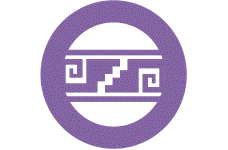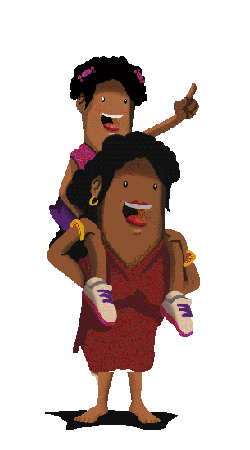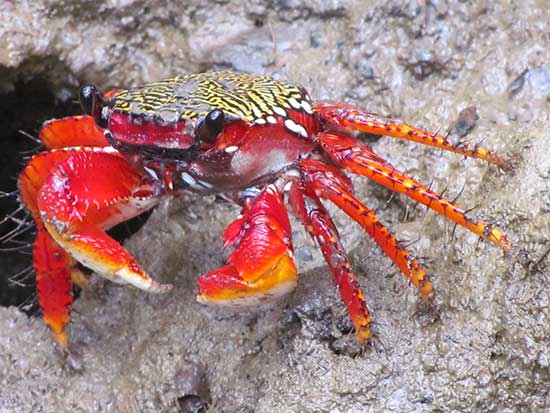
Description
Geography
Cultural
aspects
Biodiversity
Main
attractions
Activities
allowed
Existing
facilities
Documents and
recommendations
Videos
How to get?
The islands of Corazon and Fragatas are localted close to the outlet of the Chone river, offshore from the cities of Bahia de Caraquez and San Vicente. The refuge protects the remaining mangrove habitat that is within this estuary. The area is a resting and nesting site for seabirds and shorebirds, among which we find an important colony of frigatebirds. Due to its ease of access and its relative proximity to the beach, it has become a preferred destination for recreational activities. The tour through its canals and hikes among the mangrove will allow you to understand why this area is considered refuge for many species.

From Guayaquil. You take the road to Daule until you reach Nobol (41 km) and then follow the road to Montecristi (144 km). Continue through the troncal del Pacifico towards San Vicente (87 km). When you cross the bridge Bahia-San Vicente, on the first round about turn right to take the road to San Antonio-Chone until you reach the community of Puerto Portovelo (10-15 minutes). Here you´ll find the guard booth and the refuge´s visitor center. You can also get to the refuge through waterway from Bahia de Caraquez or San Vicente, where you rent a boat to get to Puerto Portovelo.
From Quito. Take the route Quito-El Carmen-Pedernales-San Vicente- Comunidad Puerto Portovelo. Or the route Quito-El Carmen-Chone-Comunidad Puerto Portovelo.
Malecon Leonidas Vega and Juan Montalvo, in front of the Santa Rosa church. San Vicente. Manabi Province.(05) 267-4836
(05) 267-4836

The main hydrographic system in this region is comprised by the Chone River, which gathers the waters of twelve different rivers that descend from the coastal mountain range and carries them to their mouth at the Pacific Ocean. In the estuary, and due to the vast amount of material that the rivers carry from the high areas, the formation of sediment banks is frequent. The islands of Corazon and Fragatas formed due to the accumulation of that material in the Chone River mouth. La Isla del Sol, is located in the enlargement area of the refuge, also originated the same way.

In the Puerto Portovelo Community there are several facilities to access the area: administrative and visitor center, departure and landing dock. The existing trails and visit routes are as follows:
Sendero Isla Corazon. This is a waterway route of 250 metres that goes through the mangrove. The company of a tour guide is required for this waterway path.
Tunel del Manglar. Water way route of 1 kilometre that goes through Isla Coraon; a paddle canoe takes you trhough the island until reaching the frigate colony. This is a medium difficulty tour that requires of a tour guide. Only available during high tide.
Recreation Zone. It is a route of 2 kilometres; where you can kayak, canoe, scale fish, and bird watch. It runs from the tip of Isla Corazon until the low area in front of the Puerto Portovelo community.
Isla del Sol Beach. Access to the island is through the San Vicente, Bahia de Caraquez, and Puerto Portovelo docks; you arrive to the beach of Isla del Sol in front of a bridge.
Los Caras. Access is only on low tide. You can do kayak, swim, bird watch, hike, and rest at the beach.
Isla Fragatas. The use of this site is only available for education or research activities.

Since ancient times, riverside communities that lived close to Chone River´s estuary maintained an economy based on the use of the mangrove ecosystem: from this ecosystem they extracted wood, coal, fish and seafood. These products were an invaluable source not only as food but also as construction material for housing, and even for inspiration for folktales and legends, characteristic of the “montubio” culture. This dynamic relationship between communities and their environment was altered due to the destruction of large areas of the mangrove that began in late 1970s and became drastic during the 1980s. During these years the banks on the estuary were deforested, leaving only a few mangroves, including the ones that are part of today´s Wildlife Refuge. Today the mangrove is being reforested and with it the recovery of ancestral practices such as fishing and seafood gathering by the local community has also been achieved.

In this refuge there are several species of mangrove trees: white, black and red.
An interesting fact is that these are not close relatives to each other; rather they belong to different botanical families, each adapting to very particular conditions. The red mangrove tree is the most abundant and can be easily identified because the roots form amazing labyrinths, and its seed has a unique adaptation: it starts to grow roots while it is still part of the mother plant. Then it breaks off and falls to onto the water or mud. Having its initial roots already grown gives it the ability to 'grab' the substrate and grow strong. The estuary zones such as that of the Chone river, with its canals and root labyrinths, receive and accumulate a great amount of nutrients. This source of nutrients is not only concentrated underneath the trees but it is distributed along the surrounding mudflats thanks to tidal influence. As a result, the fauna of the area is very diverse and contains an infinity of microscopic organisms: larger invertebrates such as shells, snails, shrimps, and crabs, also a great variety of fish such as sawfish, sea bass, snapper, bass and lisa; a few reptiles and mammals and over 100 species of birds, which are the main attraction of the refuge. The most notable species are the frigates with its large colony, white ibis, ibis morito, American oystercatcher, blue heron, night heron, cormorants, and the always familiar pelicans.

Isla Corazon
Canoe rides and guided hikes through an elevated trail that runs through the mangrove are offered. In this island you can observe the great colony of frigates and other coastal and sea birds. During the frigatebirds' mating season the males fill their red gular pouch with air to attract females. To be a witness of the courtship process during mating season is an unforgettable experience, you can contemplate how each male performs courtship movements from high tree branches, until achieving the acceptance of a female.


Clothing. Light clothing, comfortable shoes or sandals to walk through the elevated trails that this area has.







